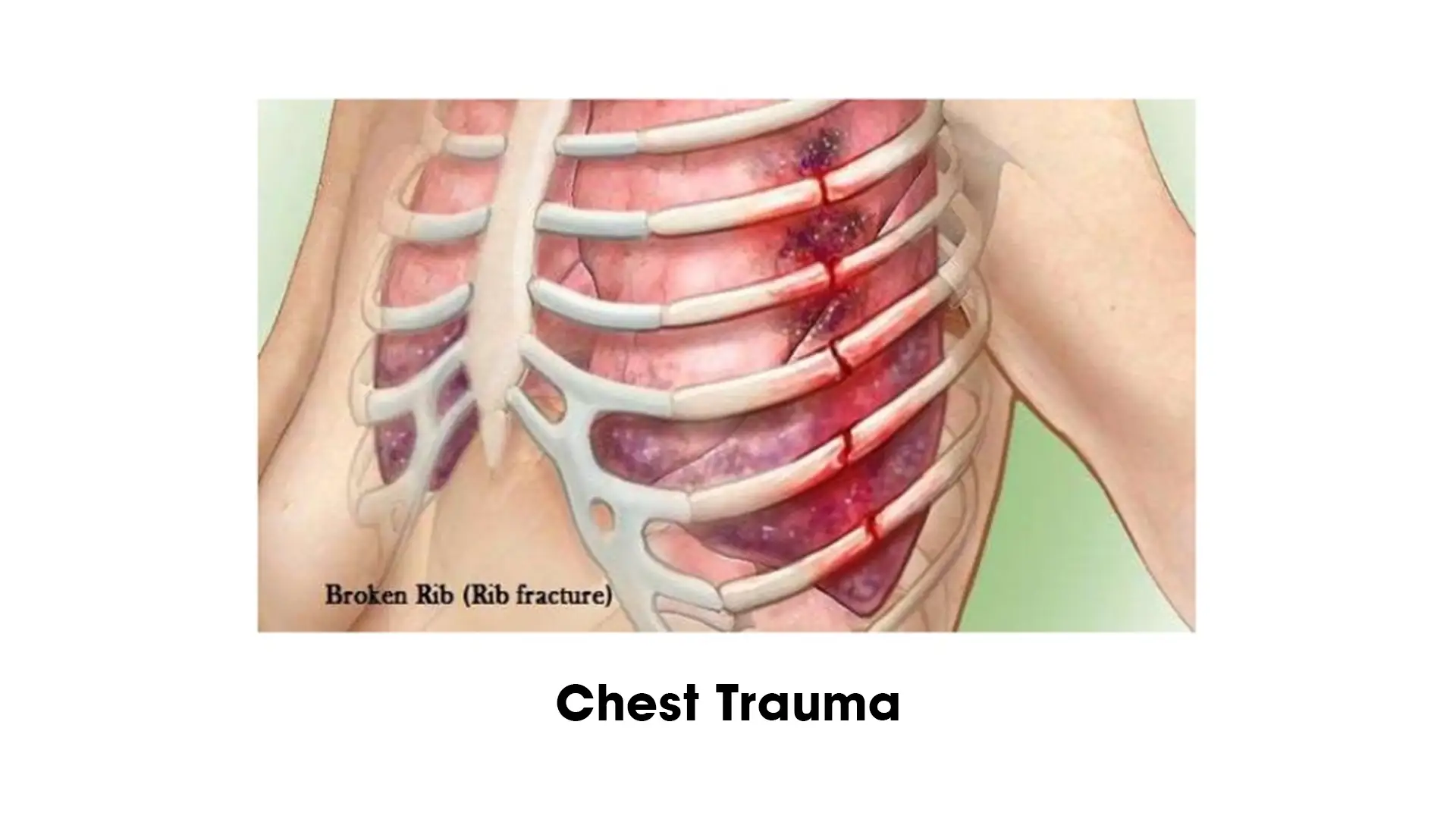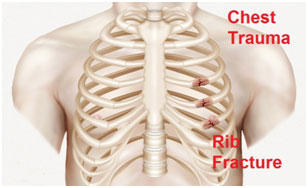

MBBS (AIIMS), MS (Surgery, AIIMS), MNAMS, FACS (USA), FICS (USA), FUICC
Sat, 03 Feb 2024

The prospect of chest trauma can occur from varying causes, including accidents, falls, sports injuries, or acts of violence. When categorizing the situation based on the severity, chest trauma can range from minor contusions to life-threatening injuries.

Getting a prompt diagnosis and assessment, followed by immediate medical attention, is key to ensuring quicker recovery and well-being. Consult Dr Arvind Kumar to get the expert advice and proper treatment.
Chest trauma accounts for 25% of all deaths from traumatic injury. Typically chest injuries are caused by blunt mechanisms such as motor vehicle collisions or penetrating mechanisms such as stabbings or fiream injuries.
Patients can also have injury to ribs, sternum, collar-bone, lungs, food-pipe, wind-pipe or other organs. In chest trauma the patients can accumulate air/blood/ other fluids in the chest leading to breathlessness With over 20 years of experience in the field of thoracic surgery.
How do we define the prospect of chest trauma? Chest trauma encompasses injuries to the chest wall, lungs, heart, blood vessels, and other structures within the thoracic cavity.
In most cases, these injuries can disrupt normal breathing and even impair blood circulation in severe cases. Prompt diagnosis and treatment are thus crucial to preventing complications and saving the patients life.
When a patient is brought into the hospital with a case of chest trauma, a few initial non-surgical interventions are put into place before surgical interventions are implemented (if required).
They include:
This is the diagnosis part, where a specialist assesses the patient and the extent of the damage or injury they have sustained.
During this period, ensuring an open airway, providing oxygen, and establishing intravenous (IV) access is crucial. In some cases, a breathing tube might be inserted too.
Next up on the list is conducting thorough imaging tests like chest X-rays, computed tomography (CT) scans, or ultrasound. This helps in assessing the extent and nature of the trauma.
This critical diagnosis process helps doctors determine the appropriate course of treatment for the patient.
Irrespective of the severity, chest trauma is painful. Hence, effective pain management is administered to ease the patient’s pain and ensure they are comfortable while receiving the other treatments.
Being one of the leading chest surgeons in India with 40+ years of clinical experience, Dr Arvind Kumar is a pioneer in treating chest trauma injuries via surgical interventions.
Some of the most effective routes include:
If the non-surgical interventions aren’t enough to treat and stabilize the patient, a thoracotomy is performed to address and repair the injuries to the heart, lungs, or major blood vessels. It involves making an incision in the chest wall to access the thoracic cavity, after which the repair is done via a robotic or VATS surgery.
In many cases, multiple rib fractures due to an accident or trauma can lead to a flail chest, which needs an immediate surgical repair to save the patient’s life. The process, known as rib fixation, involves using plates, screws, or wires to secure the ribs and restore chest wall stability.
When a lung injury is too severe to be managed conservatively, some lungs may need to be surgically removed. This lung resection procedure can improve lung function and prevent complications like infection or persistent air leaks.
In some cases, exploratory surgery is performed to assess the extent of the injuries when the standard diagnostic imaging tests don’t show favorable and clear results. This allows the surgeon to get a more accurate understanding, precise diagnosis, and targeted treatment.
If a major blood vessel in the chest has been nicked or injured due to chest trauma, it will require immediate surgical repair. Repairing these damaged blood vessels often becomes a life-and-death situation and is necessary to prevent life-threatening bleeding or circulatory issues.
Trauma to the chest can often lead to injuries in the diaphragm, the muscular partition separating the chest from the abdomen. Since the diaphragm is an integral element in the body’s functioning, repairing any damage to it is vital to restore its function and prevent risks of herniation of the abdominal contents into the chest cavity.
Chest trauma injuries require immediate medical and surgical interventions, especially when the integrity of vital structures is compromised. Timely and appropriate surgical interventions can significantly improve outcomes for patients with chest trauma, reducing the risk of complications and saving lives.
Dr. Arvind Kumar, a leading thoracic surgeon in India with 40+ years of experience, specializes in chest trauma surgeries and provides the best possible care for these critically injured individuals. For more details and appointments, contact us directly.
Copyright @ (Prof.) Dr. Arvind Kumar. All Rights Reserved / Thoracic Surgical Oncologis
License Number: U.P State Medical Council (India) No. 27637
